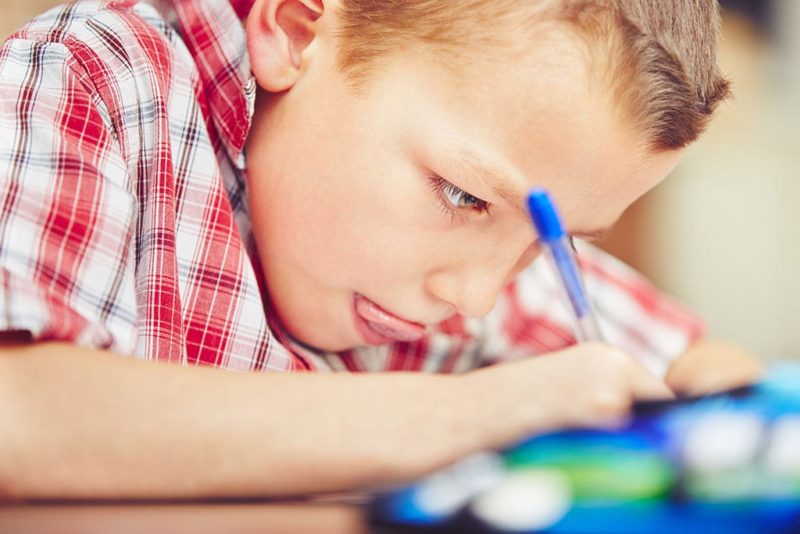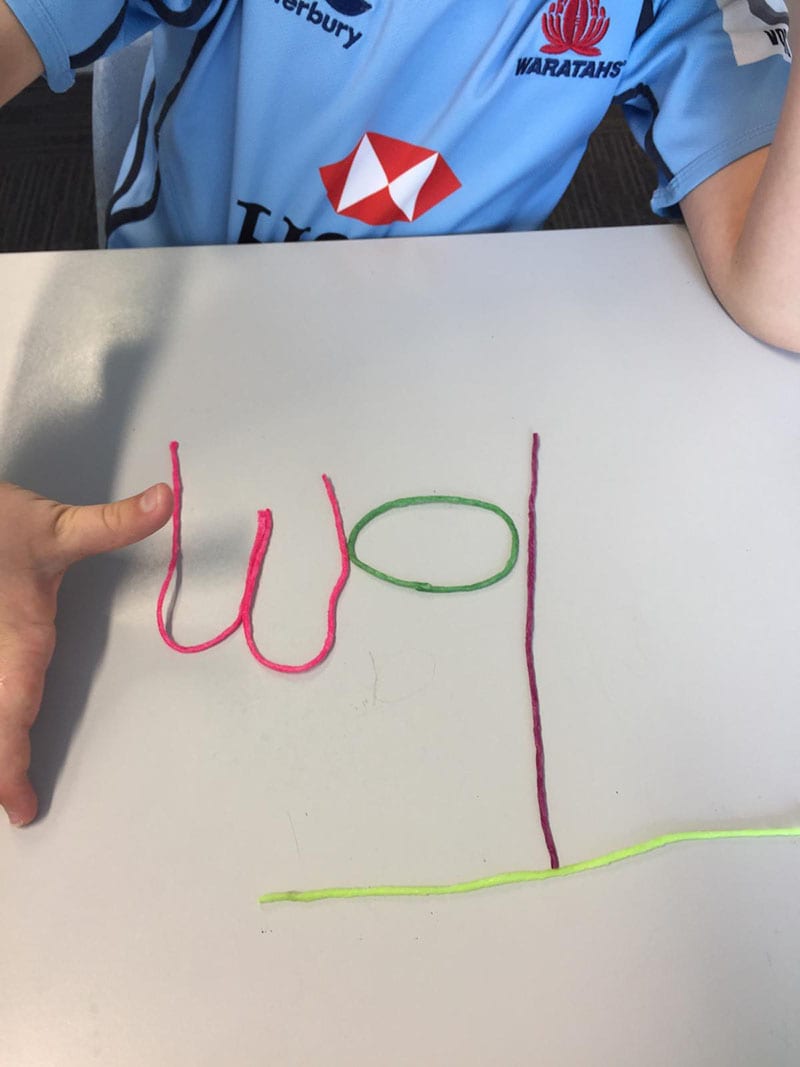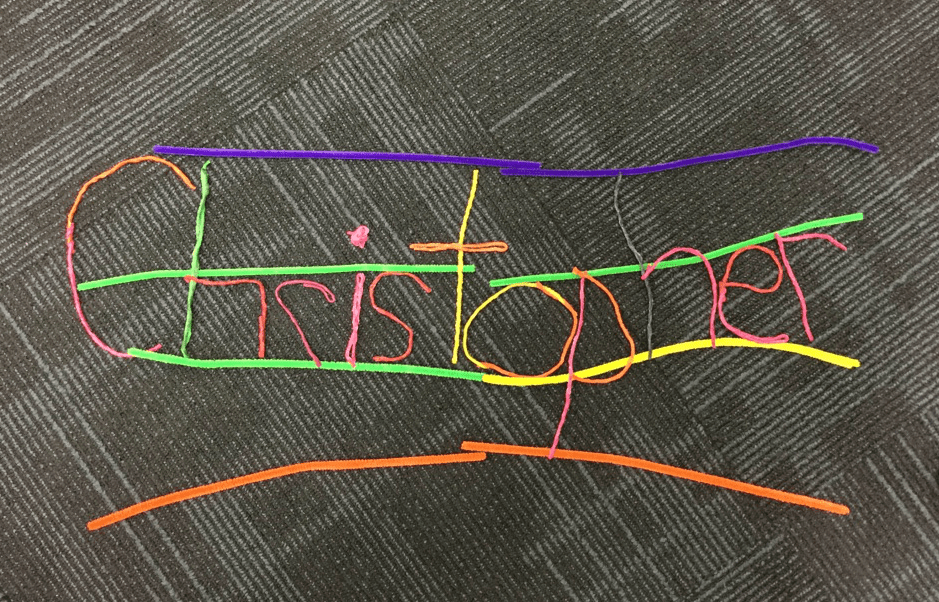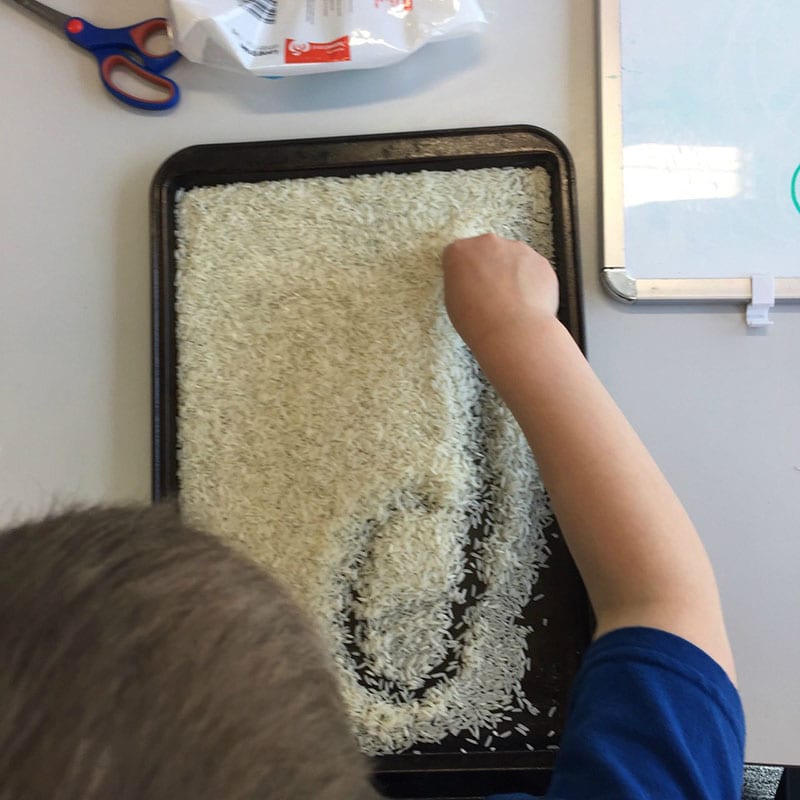It’s such an exciting moment when you can see your little one first starting to write their name for the first time! And to see all their (and your) hard work starting to come together is a wonderful feeling.
But even though they are reaching a new milestone, for lots of kids, their letter formations can still be a bit all over the shop at this stage! And it’s helpful to get them on the right track while they are still developing their handwriting skills.
When kids have poor letter formation habits it often means the speed they are required to write things down in class is too fast for them — they’re just struggling to physically keep up, so they scrawl their writing to try and get words down more quickly.
However, there is a reason kids are taught to form each letter in a specific way and, for example, their uppercase letters from the top down: it’s faster! Ironically, poor construction of letters leads to slow, inefficient writing.
Multi-Sensory Approach to Forming Letters
As Occupational Therapists, we use a multi-sensory approach to handwriting where we incorporate various materials and techniques into our sessions to encourage children to use all their senses.
A multi-sensory approach is helpful for all children, as each child is unique and has varying learning styles, plus, it keeps the sessions fun and playful where the child is more likely to retain what they’re learning! This is particularly important in teaching kids how to correctly form their letters.
With each sense that’s engaged while learning to write letters, the brain is given an additional opportunity to encode and integrate the information, so it becomes available for future reference.
Let’s dive in a little deeper to what this looks like for the different senses:
- TOUCH: Letter practice that involves tactile (touch) and proprioceptive (muscle resistance, vibration) sensory input allows the brain to process and remember the motor patterns based on information directly from the skin and muscles. This is especially important for kids with dyslexia, as they typically struggle with auditory and/or visual processing and really benefit from hands-on, whole body learning when it comes to letters and language.
- SOUND and SPEECH: Letter practice that involves sound (such as the alphabet song) reinforces motor patterns based on auditory memory.
- SIGHT: Letter practice that involves visual engagement with letter formation (watching the steps modelled for them, using various colours and different materials) reinforces letter formation based on visual memory.
- SMELL: Lastly, smell, as this sense is most strongly associated with emotional memory, so letter practice that involves smell (scented materials) can engage not only the olfactory system but also emotional memory as children create memories of working on letter formation.
Sensory Letter Formation Activities
Here are some ideas for practicing letter construction and formation with your little one! (Plus: See some photos of what we’ve done with some of our clients at the end of this post.)
- APPS: Yes — screen time can be put to good use! Certain apps can provide auditory/visual feedback as kids trace and form letters. Some great ones include Letter School, Touch & Write, School Fonts, iWriteWords and Little Writer as they have fun pictures, sounds, and require kids to restart the letter if they’re not forming it correctly!
- LETTER STARTING POINTS: When practicing writing or tracing with kids, draw “starting points” for each letter with a crayon or marker, or place a small sticker to indicate where the child should start the letter.
- CRAFT CREATIONS: Use a hands-on approach, allowing children to build letters using Wikki Stix, pipe cleaners, wooden pieces, Play-Doh kits, Theraputty and chalk boards!
- TRACING: Practice writing and tracing letters using proper formation in sand with a stick or their finger or in Play-Doh with a pencil. This provides great tactile and proprioceptive feedback to help kids remember the proper strokes for each letter.
- TEXTURED MATERIALS: Appeal to the tactile system by having kids trace letters cut out of sandpaper or other textured craft paper. Or, you may trace over learning materials with puffy paint and a hot glue gun to make them more touch-friendly!
As writing is such an essential skill to learn during early childhood, it’s important to make sure children are forming their letters correctly now — as it’s much harder to unlearn habits later.
If your child needs some extra help with their letter formation, they can come along to our holiday groups (Years K-2) and work on their handwriting skills with one of our OTs — contact our team to organise your child’s sessions.







